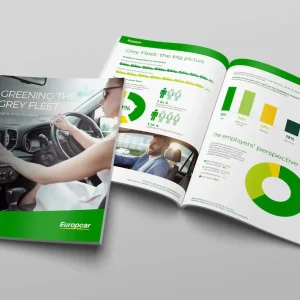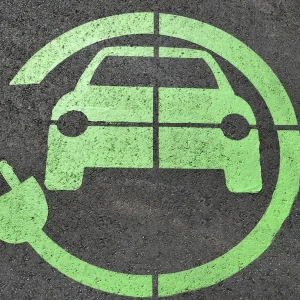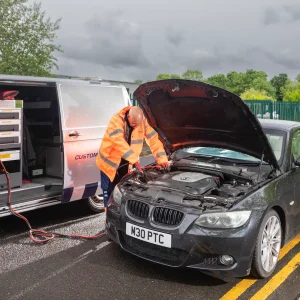The UK recently hit a major milestone of selling its one millionth electric vehicle, yet there are bottlenecks that could hamper widespread adoption from changing regulation to public perception. And yet it is fleets that continue to drive growth, even if private electric vehicle EV uptake goes through a period of waning.
Based on our survey of our customers operating fleets with at least one vehicle, 39% have at least one EV, though they tend to be in the minority within their own fleets – 19% of respondents said that EVs formed 1-10% of their fleet.
Driver anxiety and education are significant factors preventing companies from reaching their EV goals. But they are factors that companies have control over. They can’t bring down the cost of EVs (which 65% report as holding them back), nor can they increase the number of chargers (say 52%). However, they can create ways for drivers to adapt to new vehicles and new ways of driving and ‘fuelling’ up.
The key is simplicity: make the transition easy to create buy-in from everyone in the organisation from drivers to decision makers.
A spanner in the works
When it comes to switching to EVs, few issues arise from the vehicles themselves; they are easy, even enjoyable to drive. There is enough choice in the EV market, both new and second-hand, that only 25% of respondents from our survey cite lack of vehicle choice as a reason to not make the switch. And while the outlay can be seen as a problem, the growth of the second-hand market will help alleviate this.
Similarly, when it comes to public charging, there are 58,617 public chargers in the UK at the time of writing and that number is always climbing. And businesses can implement tools from partners that provide extensive EV networks and apps that show the depth and breadth of where the chargers are located (particularly fast chargers) across the UK. So, instead of vehicle and network issues, the real questions about charging are how companies can pay for public charging and secondly how does home charging work with electric company cars.
Because the cost of charging at home is so much less than charging from public chargers (about £14 for a full charge, although charging at home could be as cheap as £3,75, versus £35), it is wise to carry out all or the majority of a vehicle’s charging at a home rather than at a public charger.
It may be that a company has the space to house all its vehicles overnight, so would need to build and maintain chargers. Not all organisations have that amount of parking space available, so it is more likely that employees take their vehicles home overnight, especially given that the vehicles that companies own are cars (69%), cargo vans (52%) or pickup trucks (29%).
That being said, not all employees live in homes that can have on-street or garage charging – they may live in apartments, terraced houses or other places which simply can’t have a charger installed. The company will also need to work out when employees are given a charger: giving one to every new driver would be costly if they soon quit. Equally though, having them wait for an arbitrary amount of time before being given a home charger would mean having to use public chargers or utilise inefficient chargers that use their home’s standard electricity outlets.
Companies may also want to encourage drivers to use one of the many EV-specific electric tariffs that energy companies offer. This would save them money and give them data on their fleet’s charging, but drivers may rankle at having to change their electricity provider, especially if they are new to the company.
Making EV transition less complex
There are solutions to all these considerations, and the answer is often to keep things simple. For example, businesses could start by giving new employees charging points from their first day if they need them and they could, where a scheme meets the conditions, be provided through a company’s salary sacrifice scheme.
These kinds of incentives will attract good employees while encouraging existing employees to support the transition. Paying for charging from public chargers is also quite easily solved. The same fuel cards that have allowed drivers to pay for petrol and diesel are increasingly also offering services aimed at EV drivers. These unique payment solutions provides access to electric vehicle charging at home and on the road , as well as payment for fuel, so fleets with both EVs and ICE vehicles, which our research shows are the vast majority, will only need one card which will suit all drivers in their fleet.
The proof is in the pudding: when energy company EDF were transitioning to EV, their challenge was overcoming the pay and reclaim process for charging a company-owned EV which deterred drivers from getting involved with the first phase of EV roll-out.
Their aim was to make sure drivers got the best possible experience when moving from diesel to EV. Home charging helped save EDF drivers a lot of time and effort by eliminating the expense forms and reimbursement usually associated with paying to charge business EVs.
EDF has been able to super charge their acceleration to EV’s, installing home chargers before drivers even receive their work EVs to make sure they can use home charging payment solutions as soon as they arrive. If other businesses take that approach, I don’t see any reason why we can’t supercharge the electric future in the UK.
Ashley Tate is managing director of Allstar Chargepass UK.





